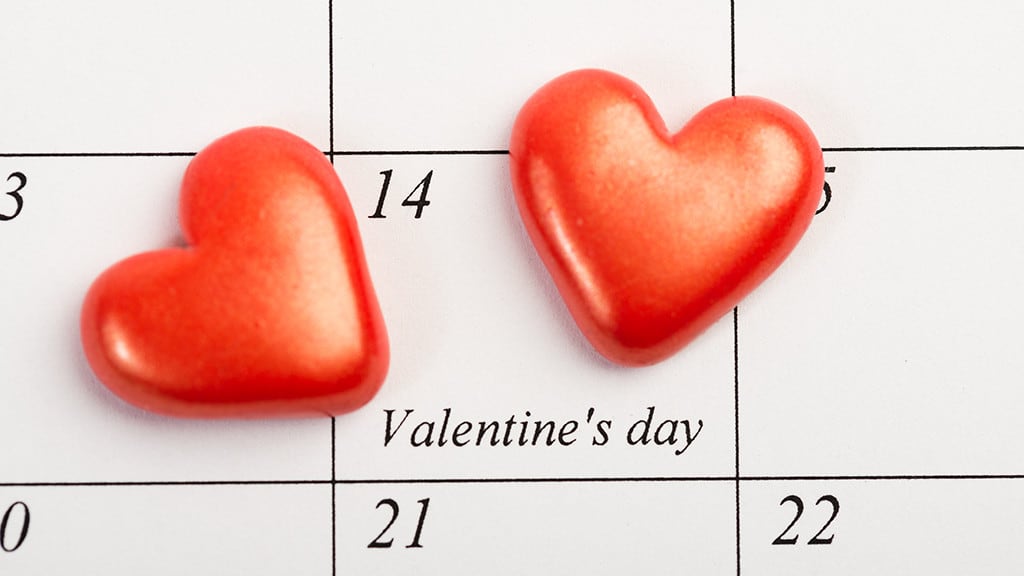Turning Romance into Dollar Signs: The History of Valentine’s Day & Marketing

Depending on which stance you’ve taken (cynical or hopeless romantic), you’ve probably come to believe one of two very different origin stories for how Valentine’s Day came to be. On one side, the Negative Nancy’s in your life will tell you that the holiday was invented by the candy and greeting card companies as a way to make money. From the other side, you’ll hear that February 14 is a celebration of Saint Valentine of Terni, patron saint of love, young people, and happy marriages.
So which one is the correct story? Well, the truth is, it’s a little of both.
The History of Saint Valentine
Not much is reliably known about Saint Valentine or how he came to be associated with the holiday. Generally, all that can be agreed upon is that he was a sympathetic, heroic, and romantic figure. One of the most widely accredited and popular Valentine’s Day legends is one where Valentine was a priest serving in third century Rome. The story goes that, during that time, Emperor Claudius II outlawed marriage for young men, believing that unwed men made better soldiers. Knowing that the decree was unjust, Valentine began performing marriage ceremonies for young couples in secret. Once his actions were discovered by Claudius, Valentine was sentenced to death.
While he was imprisoned, it’s said that Valentine fell in love with a young girl who would visit him during his confinement (possibly the daughter of his jailer, Asterius). Before he was to be executed, he was permitted to write farewell letters to his loved ones. In what would is believed to be the first valentine, he signed his letter to the woman he loved, “From your Valentine.”

The Beginnings of St. Valentine’s Day
The decision to declare February 14 as St. Valentine’s Day has its own share of confusion and speculation. Many believe that the date was chosen to commemorate the anniversary of Saint Valentine’s death or burial (which is said to have occurred around 270 A.D.). However, others claim that the decision was made as a way to Christianize and eventually replace the pagan celebration of Lupercalia, a fertility festival that took place at the ides of February (or February 15). Whatever the reason, at the end of the 5th century, Pope Gelasius declared February 14 as a day to honor Saint Valentine.
It wasn’t until nearly 10 centuries later that the holiday became associated with romantic love, thanks to the poem The Parliament of Fowls by Geoffrey Chaucer. And it wasn’t until the 1400s that written valentines began appearing. The oldest known valentine is from 1415 from Charles, Duke of Orleans, to his wife. In 18th century England, Valentine’s Day evolved into a day for friends and lovers alike to exchange small tokens of affection.

Valentines for Profit
The history of capitalizing on the St. Valentine’s Day holiday began in 1847, when Esther Howard, the daughter of a printer, was inspired to mass-produce valentines based on her own appreciation for the paper lace cards. The premise of ready-made cards took off and greeting card companies (like Hallmark) began running marketing campaigns riddled with hearts and images of cupid. Candy companies repackaged chocolates into heart-shaped boxes and increased their prices. Their advertisements sold people on the idea that, in exchange for a card and candy, buyers would be rewarded with undying love. In the 1980s, jewelry companies saw an opportunity and began marketing diamonds as the perfect Valentine’s Day gift for wives and girlfriends.
These days, the decision to jump on the Valentine’s Day marketing bandwagon is right there in the numbers. A new survey from the National Retail Federation (NRF) predicts that U.S. consumers will spend a total of $18.2 billion on the holiday this year. Even if you’re not in the cards, candy, or flowers business, Valentine’s Day is a great time of year to bust out a unique and memorable advertising campaign. Just think of Netflix’s 2016 “Binge for Love” campaign or Ford Mustage’s 2015 “Speed Dating Prank!”
In Summary
While Valentine’s Day might be historically rooted in a celebration of love and courtship, there’s no denying that it’s also become a major marketing opportunity and a way for businesses to repackage products and increase sales. But that doesn’t mean that you shouldn’t revel in both sides of the holiday! Experience the best of both worlds by showering your loved ones with tokens of affection while simultaneously planning your business’s 2017 Valentine’s campaign.